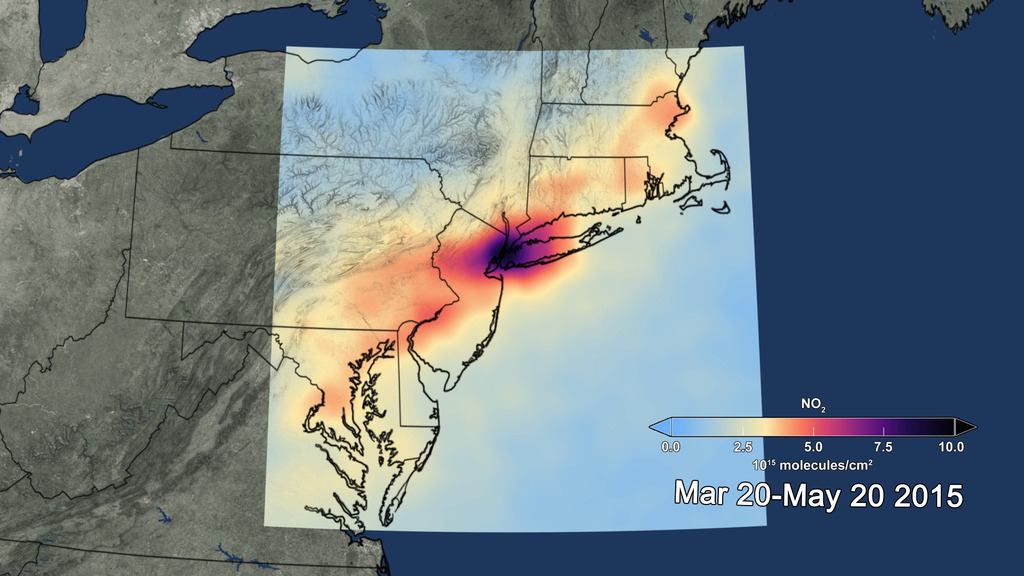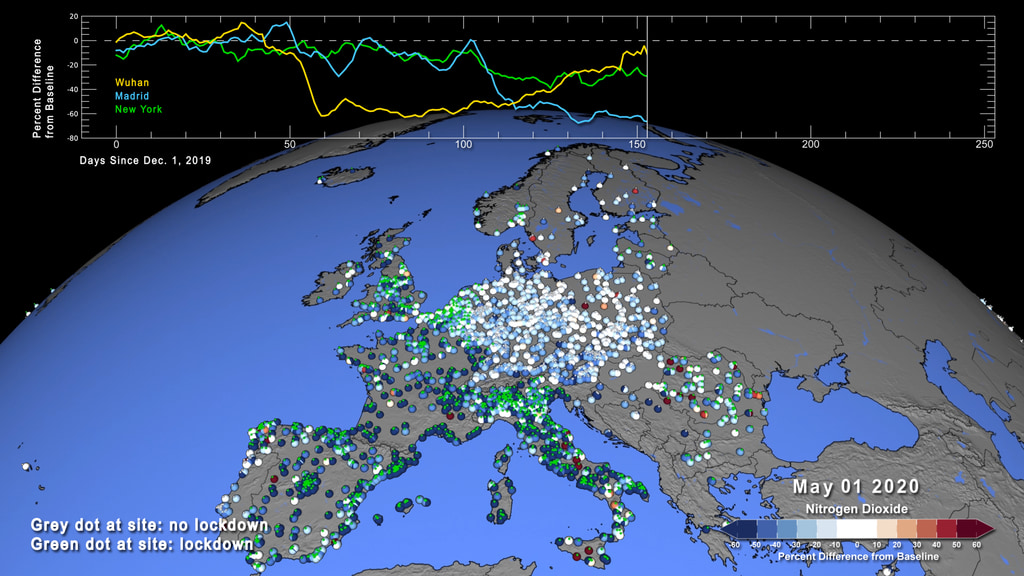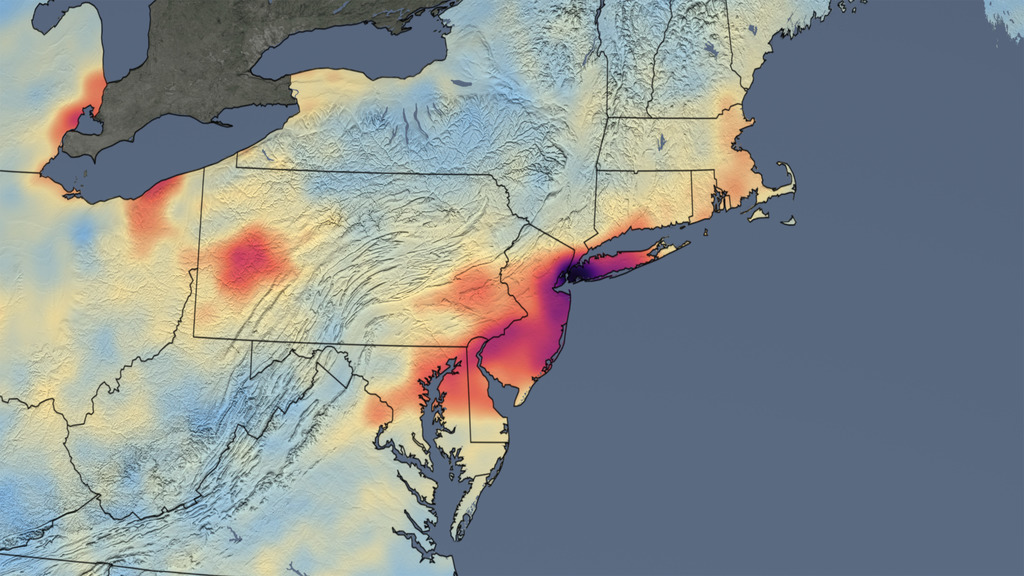Global Tropospheric Ozone Response to Worldwide COVID-19 Lockdowns
Free tropospheric ozone anomaly at 500 hPa
During 2020, global COVID-19 lockdowns resulted in a decrease in global NOx emissions. Because the amount of free tropospheric ozone is closely tied to NOx photochemistry, this reduction also produced a reduction of tropospheric ozone. This visualization presents the results of a study done by scientists at the Jet Propulsion Laboratory (JPL) to quantify this decrease. The scientists modeled the atmosphere from February to June 2020, and compared it to the “business as usual” case that would be expected in the absence of the lockdown. The result was an overall decrease of free tropospheric ozone of up to 5 ppb globally.

Colorbar
Credits
Please give credit for this item to:
NASA's Scientific Visualization Studio
-
Visualizer
- Trent L. Schindler (USRA)
-
Producers
- Katie Jepson (KBR Wyle Services, LLC)
- Ellen T. Gray (ADNET Systems, Inc.)
-
Scientists
- Kevin Bowman (JPL)
- Kazuyuki Miyazaki (JPL)
Datasets used
-
MIROC-CHASER
ID: 1118 -
Tropospheric Chemistry Reanalysis version 2 (TCR-2)
ID: 1119
Note: While we identify the data sets used on this page, we do not store any further details, nor the data sets themselves on our site.
Release date
This page was originally published on Wednesday, June 9, 2021.
This page was last updated on Sunday, January 5, 2025 at 12:13 AM EST.


